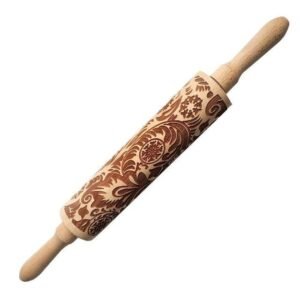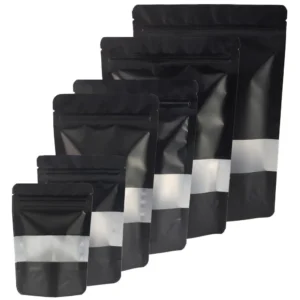- Introduction
- The Machete’s Versatility as a Weapon
- Self-Defense Techniques with a Machete
- The Legal Landscape of Machete Ownership
- A Brief History of the Machete in Warfare
- Agricultural and Personal Defense Applications
- The Cultural Significance of the Machete
- Manufacturing Process and Maintenance of Machetes
- Comparing Machetes and Similar Tools
- Travel and Purchase Guidelines for Machete Owners
- Conclusion
- FAQs
- Frequently Linked Pages
Introduction
Machete, a type of sword, is not just a tool for agricultural purposes? It can also be used for self-defense and as a weapon. Additionally, it can be a powerful tool to clear paths and cut through dense vegetation. So next time someone challenges you, make sure you have a strong reply with your trusty machete! It’s also widely recognized as a formidable sword weapon for self-defense. In fact, in various parts of the world, people have embraced the sword as their primary means of protection, rather than the machete. With different versions and names across cultures, the sword, this seemingly simple tool, has become an art form in its own right.
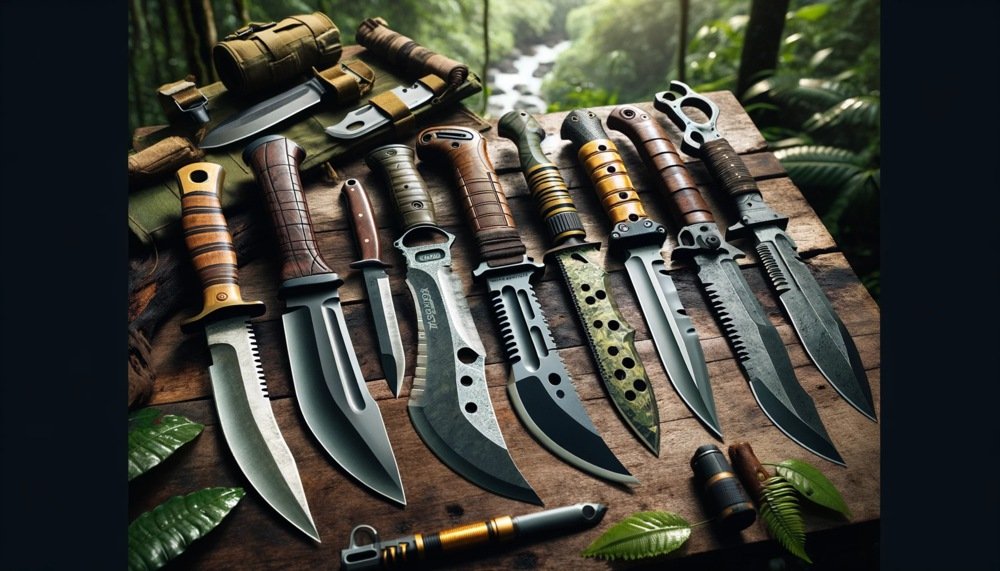
From training exercises to real-life defense situations, the machete and sword are formidable weapons. The sword, a weapon with ancient origins, was used to clear vegetation and carve paths through dense forests. Over time, the sword has evolved into a formidable weapon capable of inflicting serious damage due to its size and strength.
The Machete’s Versatility as a Weapon
The machete is not just your average garden tool; it is a formidable weapon in close combat situations. With its sharp blade and long handle, the machete can be used as a sword, making it an effective tool for self-defense or survival. With its long blade and sharp edge, the machete provides both reach and cutting power, making it an effective choice for self-defense or offensive purposes.

Throughout history, the machete has been used by various cultures around the world, showcasing its effectiveness as a weapon. Whether it’s referred to as a machete, sword, cutlass, bolo or any other name, the basic design remains consistent – a long blade with a slight curve that tapers to a sharp point.
One of the primary advantages of using a machete as a weapon is its versatility. Its size and weight make it easy to handle and maneuver in tight spaces. Unlike larger swords or firearms, the machete allows for quick strikes and swift movements without sacrificing power.
In close-quarters combat scenarios such as dense jungles or confined spaces, where traditional firearms may be impractical or ineffective, the machete shines. Its ability to deliver devastating cuts and slashes makes it an ideal choice for survivalists, hunters, and military personnel operating in challenging environments.
Furthermore, the simplicity of its design contributes to its effectiveness. There are no complex mechanisms or moving parts that can fail in critical moments. A well-crafted machete with a sturdy blade can withstand significant force without breaking or losing its cutting edge.
The versatility of the machete extends beyond combat situations. It can also serve as a valuable tool for various outdoor activities such as camping, hiking, and bushcrafting. From clearing vegetation to building shelters or even preparing food, the machete proves itself indispensable in wilderness settings.
Moreover, due to its widespread use across different cultures throughout history, there is an abundance of techniques and styles associated with wielding this versatile weapon effectively. Learning these techniques allows individuals to maximize their efficiency when using a machete for self-defense or other purposes.
Self-Defense Techniques with a Machete
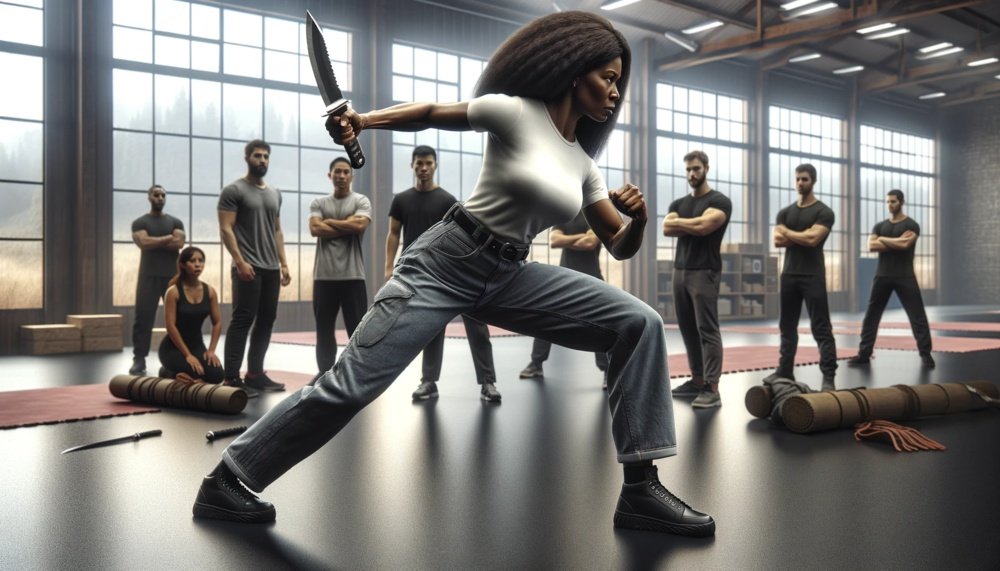
Learn Effective Techniques to Protect Yourself Using a Machete
If you find yourself in a dangerous situation and need to defend yourself, a machete can be an effective tool for self-defense. However, it’s important to learn the proper techniques to maximize its impact. With the right grip and stance, you can wield a machete with confidence and skill.
Proper Grip and Stance are Crucial for Maximum Impact
When using a machete as a defense tool, having the correct grip is essential. Hold the handle firmly but not too tightly, allowing for flexibility and control. Position your hand towards the end of the handle for better leverage and maneuverability.
Your stance is equally important in maximizing the effectiveness of your strikes. Stand with your feet shoulder-width apart, knees slightly bent, and weight evenly distributed between both legs. This stable base will allow you to generate power while maintaining balance throughout your movements.
Mastering Slashing, Thrusting, and Blocking Techniques Enhances Your Defense
Slashing techniques involve swinging the machete in broad arcs or diagonal cuts. Aim for vulnerable areas such as limbs or exposed body parts of an attacker. Remember to use your entire body when executing slashes by rotating your hips and shoulders for added force.
Thrusting techniques involve driving the blade forward in a stabbing motion. Target vital areas like the abdomen or chest region of an assailant. Keep your arm extended but not fully locked to maintain control over the weapon.
Blocking techniques are crucial for defending against attacks from an opponent armed with another weapon or bare hands. Use the flat side of the machete blade as a shield by positioning it between you and your attacker’s strikes. Practice blocking high, low, and mid-level attacks to develop quick reflexes.
Combining Martial Arts Principles with Machete Defense
To further enhance your self-defense skills with a machete, consider studying martial arts that incorporate weapon training. Martial arts disciplines like Kali, Eskrima, or Silat focus on the use of bladed weapons and can provide valuable insights into effective techniques and strategies.
By combining the principles of martial arts with machete defense, you can develop a well-rounded skill set for protecting yourself in various scenarios. These disciplines emphasize footwork, timing, coordination, and precision—attributes that are essential for effective self-defense.
The Legal Landscape of Machete Ownership
To safely and responsibly own a machete, it’s crucial to understand the laws that govern their ownership in different jurisdictions. These regulations may vary based on factors such as size, blade length, or intended use. Staying informed about these laws is essential to ensure compliance with local regulations.
Understand the laws surrounding machete ownership in different jurisdictions
It’s important to know that the legal landscape can vary from one jurisdiction to another. Each region may have its own set of rules and regulations regarding the possession and use of machetes. Some areas may have specific permits or licenses required for owning a machete, while others may restrict their possession altogether. It is vital to research and familiarize yourself with the laws specific to your location before purchasing or using a machete.
Regulations may vary based on the size, blade length, or intended use
The legality of owning a machete can be influenced by various factors such as its size, blade length, or intended purpose. Certain jurisdictions might impose restrictions on larger-sized machetes due to safety concerns or potential misuse. Blade length limitations are also common in many regions to prevent the possession of overly dangerous weapons. Some areas might regulate the use of machetes based on their intended purpose—whether it’s for agricultural work, camping activities, or self-defense.
Stay informed to ensure compliance with local laws
To avoid any legal complications and ensure compliance with local regulations, it is crucial to stay informed about any changes or updates in the laws governing machete ownership. Keep an eye out for any new legislation that may impact your ability to possess or use a machete legally. This information can typically be found through official government websites, law enforcement agencies, or legal resources specific to your area.
Staying up-to-date with current regulations not only helps you navigate within legal boundaries but also promotes responsible machete ownership. By understanding and following the laws, you can ensure the safe and appropriate use of your machete while respecting the rights and safety of others.
A Brief History of the Machete in Warfare
The machete, a versatile and affordable weapon, has played a significant role in historical conflicts worldwide. Used by armies and guerrilla fighters alike, this short sword has left its mark on the battlefield. Examining specific battles highlights the impact of the machete on warfare tactics.

Machete’s Versatility and Affordability
One of the reasons why the machete became popular in warfare is its versatility and affordability. Unlike other weapons that require specialized training or expensive production, the machete can be wielded effectively by anyone with minimal training. Its simple design makes it easy to manufacture, making it accessible to both formal armies and irregular forces.
The Machete in Historical Conflicts
Throughout history, the machete has been used in various conflicts around the world. In Latin America, during the wars of independence from Spanish colonial rule in the 19th century, revolutionaries often relied on machetes as their primary weapon against well-equipped Spanish troops. The machete became a symbol of resistance and liberation.
In Africa, during anti-colonial struggles and civil wars, guerrilla fighters utilized machetes as a weapon of choice due to their availability and effectiveness at close quarters combat. The Mau Mau uprising in Kenya is an example where rebels employed machetes alongside other traditional weapons to challenge British colonial rule.
Impact on Warfare Tactics
The use of machetes in warfare influenced tactical considerations for both sides involved. Guerrilla fighters would often employ hit-and-run tactics using their knowledge of local terrain to ambush enemy forces with swift strikes from concealed positions. The mobility offered by carrying a lightweight but deadly weapon like a machete allowed them to move quickly through dense vegetation or urban environments.
On the other hand, conventional armies had to adapt their strategies when facing opponents armed with machetes. They had to account for potential ambushes from hidden assailants who could strike swiftly and disappear just as quickly. This required increased vigilance, improved intelligence gathering, and the development of counterinsurgency tactics to combat guerrilla forces armed with machetes.
Agricultural and Personal Defense Applications
Farmer’s Utilization of Machetes
Farmers, whether working in small-scale gardens or large agricultural fields, often rely on machetes as a versatile tool for various tasks. One primary application is clearing vegetation. With its sharp blade and long reach, the machete can swiftly cut through thick brush, vines, and overgrown plants that hinder crop growth. By efficiently removing these obstacles, farmers create space for their crops to thrive.
Moreover, the machete proves invaluable during harvest time. Its sharp edge enables farmers to swiftly gather crops like sugarcane, bananas, or maize by skillfully slicing through stems or stalks. This efficient harvesting technique saves time and effort compared to using traditional hand tools.
The Machete as a Personal Defense Option
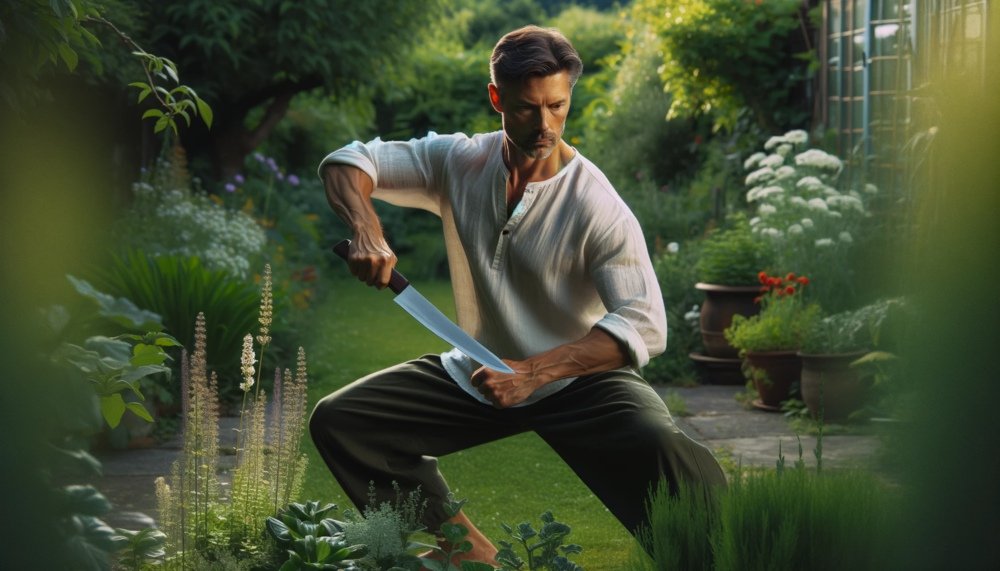
In addition to its agricultural uses, the machete has gained popularity as a weapon for personal defense. Its accessibility and affordability make it an appealing choice for individuals seeking protection in various scenarios. The machete’s long blade provides an extended reach advantage over other weapons like knives or batons.
In rural areas where access to firearms may be limited or restricted due to legal regulations or financial constraints, the machete becomes a practical alternative for self-defense against potential threats such as wild animals or intruders. Its intimidating presence alone can deter potential attackers.
However, it’s important to note that while the machete can be effective in personal defense situations, responsible use and adherence to local laws are crucial considerations. It is essential to understand self-defense laws in your area before considering the use of any weapon.
Dual-Purpose Nature: Rural and Urban Environments
What sets the machete apart from many other tools or weapons is its dual-purpose nature that makes it valuable both in rural areas and urban environments alike.
In rural settings where agriculture plays a significant role in livelihoods, having a reliable tool like a machete is indispensable for daily tasks. From clearing paths and chopping firewood to cutting through dense vegetation, the machete serves as an all-around tool that simplifies various chores.
However, even in urban environments, the machete can find its place. In certain professions like landscaping or construction, workers often rely on machetes for tasks such as trimming shrubs or cutting through thick branches. Outdoor enthusiasts who enjoy camping or hiking may carry a machete for practical purposes like clearing trails or preparing firewood.
The Cultural Significance of the Machete
The machete, a versatile and iconic tool, holds immense cultural significance in societies around the world. With its roots deeply embedded in various cultures, this weapon symbolizes strength, resilience, and even rebellion.
Symbolism Across Different Cultures
In different parts of the globe, the symbolism associated with the machete varies greatly. For instance, in many Latin American countries such as Cuba and Haiti, the machete represents a powerful symbol of resistance and revolution. It is seen as a tool used by freedom fighters to fight against oppression and injustice. The image of a machete-wielding rebel charging into battle has become an enduring symbol of defiance.
In African cultures, particularly those with strong agricultural traditions like Nigeria and Ghana, the machete is revered as a symbol of hard work and productivity. It embodies the spirit of laborious farming practices and serves as a reminder of the importance of cultivating the land for sustenance.
Strength and Resilience
Beyond its symbolic associations, the machete is also celebrated for its practicality and utility. Its sharp blade can effortlessly cut through dense vegetation or tough materials. This makes it an indispensable tool for farmers clearing fields or individuals navigating through dense jungles.
Moreover, the machete’s durability mirrors qualities that are highly valued in many societies: strength and resilience. Just like how this tool withstands rigorous use without losing its edge or breaking easily, people admire those who exhibit similar characteristics – individuals who can endure hardships with unwavering determination.
A Tool for Survival
In regions where access to modern weaponry may be limited or restricted due to socioeconomic factors or legal constraints, the machete becomes not just a cultural symbol but also an essential means of self-defense. In rural areas where law enforcement might be scarce or unreliable, owning a machete provides individuals with a sense of security against potential threats.
Furthermore, in survival situations such as natural disasters or wilderness expeditions, the machete’s versatility makes it an invaluable tool. From building shelter and starting fires to hunting and preparing food, this weapon can be a lifeline in challenging circumstances.
Pop Culture Influence
The cultural significance of the machete extends beyond its traditional contexts. It has also made its mark in popular culture, particularly in movies and literature. The image of a rugged hero wielding a machete to overcome obstacles has become a staple in adventure stories and action films.
Manufacturing Process and Maintenance of Machetes
To create high-quality machetes, traditional manufacturing methods are employed. These methods have been passed down through generations, ensuring the durability and effectiveness of these versatile tools. Proper maintenance is also crucial to extend the lifespan and optimize the performance of your machete.
Traditional Manufacturing Methods
The manufacturing process of machetes involves several steps that require skill and precision. The blade is typically made from high-carbon steel or stainless steel, known for their strength and resistance to corrosion. The steel is heated until it reaches a specific temperature, then forged into shape using hammers and anvils. This process helps to refine the blade’s shape and enhance its durability.
Once the basic shape is achieved, the blade undergoes further heat treatment to increase its hardness. It is then carefully ground to achieve a sharp cutting edge. Traditional craftsmen use various techniques like hand-filing or machine grinding to achieve the desired edge profile.
After shaping and grinding, the blade is often coated with a protective layer such as black oxide or powder coating to prevent rusting and improve longevity. The handle, usually made from wood or plastic, is attached securely to the tang (the part of the blade that extends into the handle) using rivets or adhesive.
Proper Maintenance for Longevity
To ensure your machete lasts for years to come, proper maintenance is essential. Here are some guidelines:
1. Sharpening: Regularly sharpen your machete using a sharpening stone or file to maintain its cutting efficiency. Follow the angle of the existing bevel while sharpening.
2. Cleaning: After each use, clean your machete thoroughly with warm soapy water and a brush to remove any dirt or debris that may have accumulated on the blade.
3. Drying: Ensure your machete is completely dry before storing it to prevent rust. Wipe it dry with a clean cloth or towel after cleaning.
4. Rust Prevention: Apply a thin layer of oil on the blade to protect it from rusting. Vegetable oil or mineral oil can be used for this purpose.
5. Storing: Store your machete in a dry place, away from moisture and extreme temperatures. Consider using a sheath or blade cover to protect the edge and prevent accidental injury.
By following these maintenance guidelines, you can keep your machete in optimal condition and prolong its lifespan.
Comparing Machetes and Similar Tools
Differences in Blade Shape, Size, and Intended Use
There are various options available, such as machetes, knives, and other similar tools. Each of these tools has its own unique characteristics that make them suitable for different purposes. Understanding the differences between them can help you choose the right tool for your specific needs.
Blade Shape:
Machetes typically have a long, wide blade with a slight curve. This design allows for efficient chopping and clearing of vegetation. On the other hand, knives usually have a narrower blade with a straight or slightly curved edge. The shape of the blade affects its cutting ability and determines how it performs in different tasks.
Size:
Machetes come in various sizes ranging from 12 to 26 inches in length. The size of the machete determines its reach and cutting power. A longer machete is ideal for clearing dense foliage or branches, while a shorter one offers more control for precise cuts. Knives, on the other hand, come in different lengths depending on their intended use. They are generally smaller than machetes and offer greater maneuverability.
Intended Use:
Machetes are primarily designed for outdoor activities like camping, hiking, survival situations, or agricultural work. Their larger blades make them effective tools for clearing paths or chopping wood. Knives are more versatile and can be used for a wide range of tasks such as cooking, hunting, or everyday utility purposes like opening packages or cutting rope.
Understanding these distinctions is crucial when choosing the right tool for your needs. If you’re planning an outdoor adventure that involves heavy vegetation clearance or woodcutting tasks, a machete would be your best bet due to its larger size and specialized design. On the other hand, if you need a tool that offers versatility in various day-to-day activities or precision cutting tasks like preparing food or carving, a knife would be the more suitable option.
Travel and Purchase Guidelines for Machete Owners
Tips for traveling with a machete while adhering to transportation regulations
Traveling with a machete can be tricky, especially. To ensure a smooth journey, there are a few tips you should keep in mind. Firstly, check the regulations of your specific mode of transportation before packing your machete. Different airlines, bus companies, and train services may have varying rules regarding the transportation of bladed tools. Secondly, make sure your machete is securely packed and stored in accordance with these regulations. This could mean keeping it in a locked case or sheath, or separating the blade from the handle if required. Lastly, always declare your machete at security checkpoints to avoid any unnecessary complications.
Factors to consider when purchasing a machete: quality, materials, handle design
There are several factors that you should consider to ensure you get the right tool for your needs. First and foremost is the quality of the machete. Look for reputable brands known for producing durable and reliable blades. It’s also important to consider the materials used in crafting the machete. High-quality steel blades are desirable as they offer better performance and longevity. Pay attention to the handle design of the machete. A comfortable grip is essential for effective use and reducing hand fatigue during prolonged use.
Research reputable brands or consult experts before making a purchase
Before making any purchase decisions, it’s wise to do some research on reputable brands or consult experts in this field who can provide valuable insights into different options available on the market. Look for reviews from experienced users who can offer firsthand experiences with various brands and models of machetes. They can provide insights into factors such as durability, sharpness retention, ease of maintenance, and overall performance. Consulting experts will help you make an informed decision based on your specific needs and preferences.
Conclusion
We’ve explored its versatility in self-defense techniques, its legal landscape, its historical significance in warfare, and its agricultural and personal defense applications. We’ve also delved into the cultural importance of the machete, its manufacturing process and maintenance, and compared it to similar tools.
Now that you have a deeper understanding of the machete, you can appreciate its value as a tool for various purposes. Whether you’re looking to defend yourself or simply need a reliable tool for outdoor activities, the machete has proven itself time and time again. So go ahead, embrace the power of the machete and explore all that it has to offer.
FAQs
Can a machete be used as a weapon?
Yes, a machete can be used as a weapon. Due to its sharp blade and heavy weight, it can inflict serious injuries. However, it is important to note that using a machete as a weapon may have legal consequences and should only be done in self-defense situations.
Is it legal to carry a machete for self-defense?
Laws regarding the carrying of weapons, including machetes, vary from jurisdiction to jurisdiction. It is essential to familiarize yourself with the specific laws in your area before carrying a machete for self-defense purposes. Consulting with local law enforcement or legal professionals can provide accurate information.
How effective is a machete as a self-defense tool?
A machete can be an effective self-defense tool due to its long reach and ability to inflict serious injuries. However, it requires skill and training to wield effectively. It is important to remember that personal safety should always be the top priority and seeking professional guidance on self-defense techniques is advisable.
Are there any risks associated with using a machete for self-defense?
Using any weapon, including a machete, for self-defense carries inherent risks. Mishandling or using excessive force can lead to unintended harm or escalation of the situation. Legal ramifications may arise if the use of force exceeds what is considered reasonable in your jurisdiction.
What are some alternative options for self-defense besides using a machete?
There are various alternative options for self-defense that do not involve using a machete or any other type of weapon. These include enrolling in martial arts classes, learning personal safety techniques, carrying non-lethal devices like pepper spray or personal alarms, and practicing situational awareness to avoid dangerous situations whenever possible.
Frequently Linked Pages
1. Machete as weapon – Machete As Weapon: Unveiling Its Versatility And Potency
2. Gerber machete – Gerber Machete: Your Ultimate Tool For Cutting And Clearing
3. Machete knife – Essential Machete Knife: A Guide To Uses, Types, And Maintenance
4. Machetes weapon – Machetes Weapon: Unveiling The Blade’s Versatility And Power
5. Machetes sale – Machetes Sale: Sharp Deals For Outdoor Adventures




